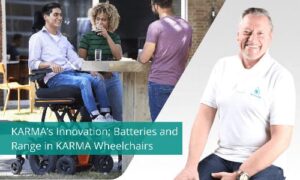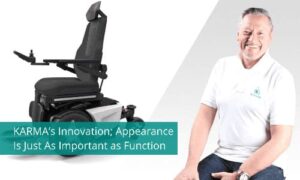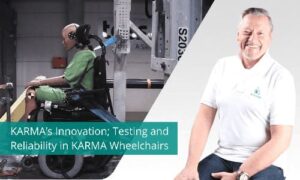As part of the latest series of KARMA blogs, we are going to be speaking with Eric van Olst, Chief Innovations Officer at KARMA, to get a better understanding of the the processes and considerations that go into every aspect of making our chairs. From the design and testing, right through to the features and battery life.
We start today with an interview about the importance of the power functions of the KARMA Evo chairs, the features that enable our KARMA chairs to go from laying flat all the way to standing.
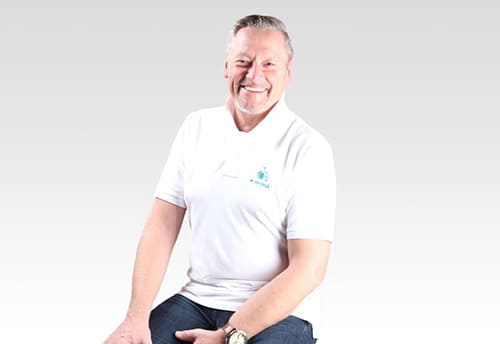
Eric van Olst, Chief Innovations Officer at KARMA
Why are the power functions so important?
A human is not designed to stay in a position for a long time, so we tend to move to keep our body fit and well conditioned. The average person sits still for around 30 seconds in a chair. Then he/she needs to move in some way or another. Someone with a disability might not have the ability to move by themselves, so the seat of a wheelchair moves to aid the function of the body.
The backrest recline, leg rest adjustment and seat tilt help to keep a comfortable seating position and provide the user with good support. A seat tilt can be useful in other situations, such as driving on curbs or down slopes. By tilting the seat, the seating position provides more stability. This could be important when driving downhill, where the wheelchair would be leaning forward, the user can compensate for that negative seat angle by using the seat tilt.
A seat lift can give you more freedom of movement. So it adds a third dimension to the horizontal movements, it enables the user to lower or raise themselves in the vertical position. This can be helpful when shopping in the supermarket, or with friends at the pub, – ensuring the user can be at eye level with their friends. At home it can help when looking to transfer from the chair into a bed or other seat, by positioning the chair at the same height as the other surface.
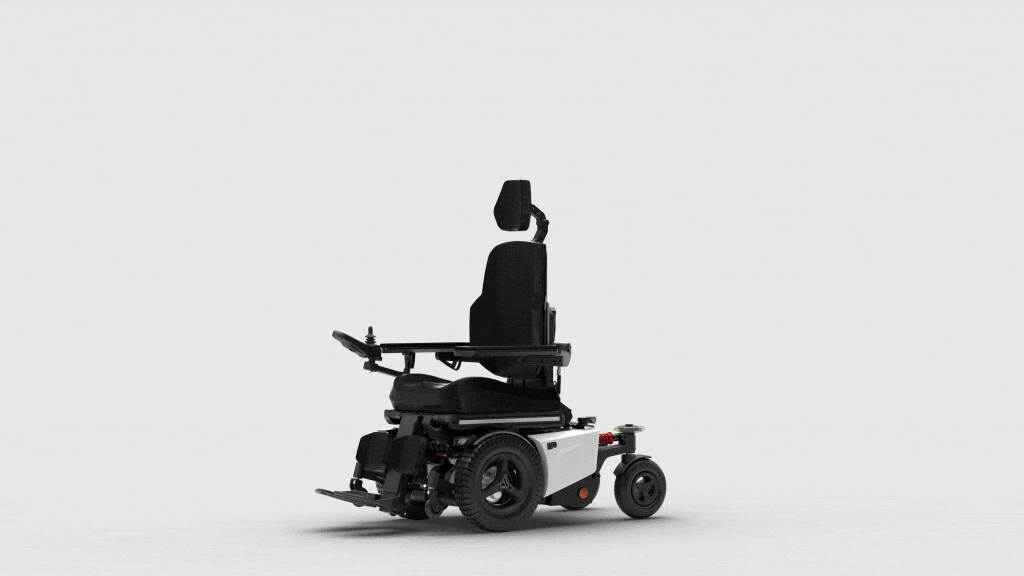
EVO Altus standing power wheelchair has three different ways to stand up: sit-to-stand, recline-to-stand, and lie-to-stand.
How do you make the decision as to what movements and functionality to put into the chairs’ mechanisms?
It all depends on the demands of the user. We always think in a “Lego” mindset. We create a “brick” which can be added or left out. So that way, we are able to add functionality when required by the user. Another factor is of course budget. The more budget you are able to spend, the more functionality you can put into the wheelchair. A backrest recline which has a range of 35 degrees angle often does the job for all, but sometimes, if you need to lay down, 90 degrees of shear recline is required. That movement is technically more advanced and therefore can be more expensive.
Have the power functions changed over the years?
In the early days it was just a simple motor which moved a part of the wheelchair along a point of rotation. Nowadays, we get feedback on each power function. It tells the electronics what the position of each seat function is. In some cases, we can even store that position as being the starting point or endpoint, so we are able to make it more “intelligent”. Some power functions also have biomechanical movement or added shear reduction, for example when you recline the backrest of a Lectus seat, the backrest stays in the right position to the user’s backrest. There is hardly any shear.
What are the key features of the KARMA power functions?
For our higher-end Lectus LR and Altus chairs, we have biomechanical leg rests with feedback mechanisms and memory. On the Altus chair we think we have the smoothest standing curve on the market. It moves like it’s one curve, smooth and relatively fast.
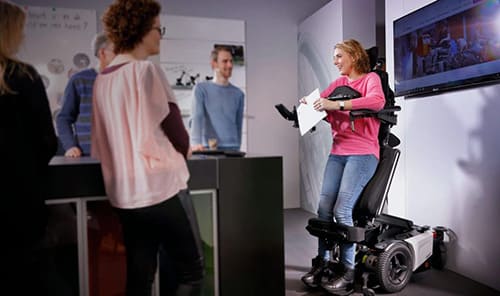
Is there anything that is currently difficult to accommodate for what you are working on? What more could we look to do?
We are constantly working on new technologies to improve the product being even more user friendly and service friendly. New computer and internet technology will help us there.
You can check out the full range of KARMA wheelchairs and find out more about our unique power functions on the KARMA website.
Keep Reading

 Global
Global